These Vietnam travel tips will ensure you have a wonderful trip to what I consider my favorite destination in all of Southeast Asia!
Vietnam is notorious for winning over the hearts of travelers. There’s just something about the authentic and chilled mentality of the people, the fantastically delicious street food and the overall beauty of the natural landscapes. And I cannot forget to mention the chaotic yet colorful and oh so joyful cities.
Whether you’re planning a trip just for a few days, a few weeks or ten days in Vietnam, these helpful Vietnam travel tips to make your trip even more magical.
↠ Read more: My Favorite Backpacking Essentials for Asia
This post may contain affiliate links, meaning at no additional cost to you, if you click my links and make a purchase, I may earn a small commission. Learn more on my disclosure page. Thank you for your support!
25 Vietnam Travel Tips for Your Next Backpacking Adventure
1. Know Vietnam’s visa requirements
The most important thing to know before going to Vietnam; you need a tourist visa. As of 2020, tourists have a few options, the visa on arrival, getting the visa from a Vietnamese embassy, or the e-visa.
Vietnam’s visa on arrival:
You can grab a visa on arrival once you land in Vietnam, but you’ll need to apply for an entrance letter first. The visa on arrival allows for a maximum stay of 3 months with the option for single or multiple entries.
I got my letter from Vietnam-visa.com. I paid a service fee of $34 USD for the 3 months, single entry letter. They’ll email you your approval letter and you’ll need to print it off and bring it to the airport.
Once you arrive in Vietnam, you’ll need to go to the visa on arrival / landing visa counter that is located right before passport control. You need to hand in two passport photos, your visa entrance letter and a completed application form that they have on-site. If you forget the photos, they charge a small extra fee to take a photo of you on the spot. Then they’ll take all of your documents and your passport and tell you to sit down.
Depending on how busy the airport is, the wait can be a few minutes to an hour. Listen out for your name to be called back to the counter. You should get your passport back with the visa stamped inside a full page and then you’ll have to pay a stamping fee of $25 for single entry or $50 for multiple entry (for Americans at least).
Before you leave, check to make sure the stamp has the correct visa/dates/name. Then you’re all set to go through immigration! This entire process for me took about an hour from disembarking from the plane.
Vietnam e-visa:
Vietnam has started to offer e-visas to tourists from 80 different countries. You can apply directly on the Vietnamese government website here. The e-visa is a 30 day, single entry visa and as of now it costs approximately $25 USD. It does not get stamped into your passport but rather you receive a letter you must carry with you.
There are strict rules about which ports you can enter and exit using the e-visa, so be sure to check out your travel plans to make sure the e-visa will work for you.
For example, there are stories of travelers with an e-visa trying to travel by bus from Sapa to Laos and being turned away because it’s not an approved port for their visa.
Applying at your local embassy:
Depending on where you’re from, you can apply for a Vietnam tourist visa to be stamped into your passport before leaving your home country. You should reach out directly to your local embassy to see what their application and fee requirements are.
Of course, getting a Vietnam tourist visa depends completely on where you’re from. You can check your specific country’s requirements on a helpful website tool such as iVisa.com or directly from the Vietnamese embassy closest to you.
↠ Read more: 17 Best Places to visit in Vietnam that Inspire Wanderlust
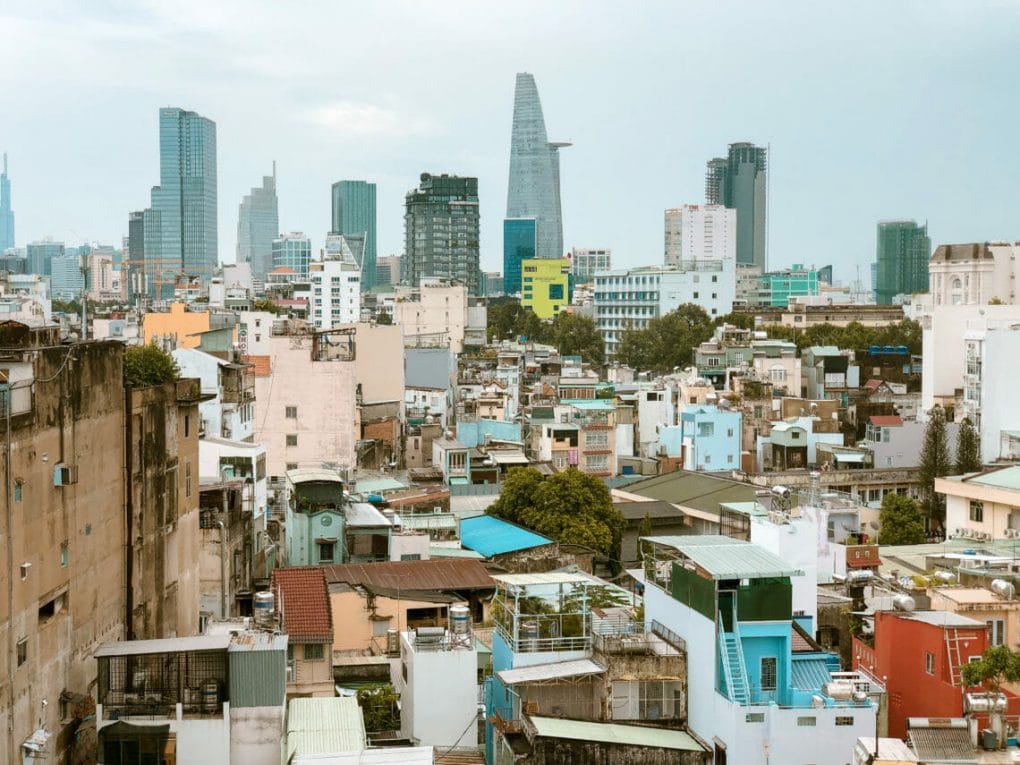
2. Prepare yourself for ATMs in Vietnam
Not all banks here accept foreign cards, so you’ll want to look out for the bigger branches that do. I’ve successfully gotten cash out from ACB, Sacombank, HSBC, and Citi Bank. Typically, the max withdrawal from ATMs here is either 2,000,000 or 3,000,000 VND / $87 USD or $130 USD and the fee can range from 30,000 to 60,000 VND / $1 – $3 USD.
3. Stay connected while traveling in Vietnam with a SIM card
If you’re like me and prefer to maintain a connection to the interwebs, data plans in Vietnam are pretty affordable. And if you plan on renting a scooter and driving around the country, you’ll definitely want a working phone.
You have a few company options when buying a SIM card in Vietnam; Viettel, Mobiphone and Vinaphone. I personally went with Viettel. It’s the largest telecommunications company in the country and it was also the most recommended brand by other travelers online.
I paid 170,000 VND / $7.50 USD for my SIM card and a 5GB for 30 data plan. It’s easy to top up more data if you happen to run out. I just went to a local Viettel store when I needed more data and paid 125,000 VND / $5.50 USD for another 8GB + unlimited slow data. You can technically buy top ups at local convenience stores.
If you’re flying into the country and looking to buy a SIM card at the airport, I’ve read many reviews of travelers getting scammed. They’ll pay for the SIM card and a data plan, only to find the data was never loaded and presumably the sales clerk pocketed the money instead. To be safe I went directly to a store rather than a third party and didn’t have any issues.
↠ Read more: A Saigon Bucket List: 30 Best Things to Do in Ho Chi Minh City
4. Come prepared with some basic, survival phrases in Vietnamese
Because of how tonal it is, Vietnamese is a notoriously difficult language. So, learning local phrases is more for when you’re in a pinch or to show locals that you tried to learn a bit about their culture. Many people who work in tourism in Vietnam speak English, but not everyone. Some Vietnamese phrases for your travels;
Hello – xin chào– sin chow
Goodbye– tam biet – tarm byeet
Sorry – Xin Loi – sin loy
Thank you –cám ơn – gahm un
Please– làm ơn – lahm uhn
Yes– dạ – ya
No –không- khohm
Vegetarian– chay – jai
5. There’s WIFI nearly everywhere.
If you prefer not to pay for a SIM card, you’re in luck! Most of the café, restaurants and hostels we visited had free and decent WIFI for guests. It was rare for a place not to have any Wi-Fi – even a lot of the local street food spots had it available. The only time you probably won’t be able to connect is from the actual small carts on the street.
6. In Vietnam, motorbikes rule the road (and sometimes the sidewalks)
Scooters are king here, and one of the best ways to see the country is by hopping on one yourself! If you’re not fully comfortable driving but want to take part in the seriously integral motorbike culture in Vietnam, I recommend practicing a bit before arriving. Otherwise there are a lot of easy rider tours you can join and plenty of Grab motorbike taxis for you to take!
To drive legally in Vietnam, make sure you always wear a helmet, have the appropriate license (a motorcycle license from home and an international driving permit), and reliable travel insurance. Vietnam is infamous for having one of the highest motor vehicle related deaths in the world and I’ve met so many travelers with unpleasant stories of getting into accidents. Come prepared!
I’ve also heard stories of police officers stopping foreigners on bikes to try to catch them doing something illegal for a “fine” (read: bribe). They often want the cash you have on you, so keep a 200,000 dong / $8 USD note handy.
↠ Read more: Districts of Ho Chi Minh City: Where to Stay in Saigon
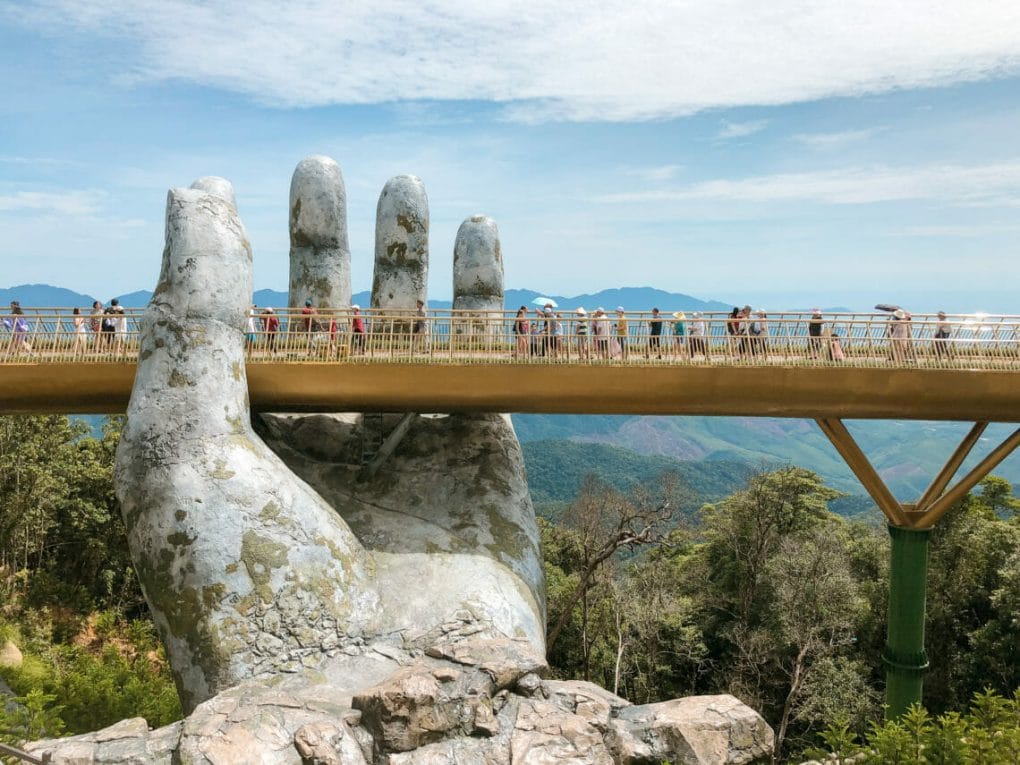
7. Come with the Grab Taxi app downloaded on your phone
Probably one of the cheapest and most convenient ways to get around Vietnam will be by using the app Grab. It’s essentially the Uber of South East Asia and lets you call a car or bike taxi nearly anywhere at any time. You can even order food delivery on Grab in the major cities.
You’ll want to download the app for your trip and add your credit or debit card to get the best rates. Motorbike rides are a fraction of the cost of a car ride and is a classic Vietnam experience. You probably won’t pay more than $1 USD for a ride, depending of course where you’re headed.
It’s not uncommon for Grab drivers to ask you to give him/her a good rating on the app or for directions as they drive. I was always caught off guard at the start of my travels and it helped immensely having the route on my Google Maps before hopping on.
8. Read up on how much you should pay for a motorbike ride
Depending on how long you’ll be needing one, you can expect to rent a motorbike for about 1 million VND or $45 USD per month, or about 100,000 – 150,000 dong per day ($4 – $7 USD) depending on where you are and who you rent through (summer 2019).
These figures will obviously change with time and vary city to city, but I like to throw out figures for comparison sake. It always helps me on my travels when someone does the same so I have a better sense of if I’m getting ripped off or not!
↠ Read more: How to Spend One Day in Hanoi Itinerary
9. Watch out for drive-by motorbike theft
When I first arrived in Vietnam, people warned me of drive-by motorbike theft. To be honest, I didn’t take the warnings seriously until it actually happened to me.
One night out on the town I was holding my phone and a man on a motorbike drove by and tried to rip it out of my hands as he passed. Thankfully his aim was slightly off and I had a tight grip on it! I was so stunned all I could manage to shout was “hey!”.
It’s common for passing motorbikes to try to snatch any valuables off of unsuspecting people so beware of your bag and your phone. Theft in general can be a bit of a problem in Vietnam so always securely store your valuables and lock them up when you can.
10. Crossing the street in Vietnam is a game of chicken
This might sound like a ridiculous Vietnam travel tip, but it’s in your best interest to read up on how to cross the street properly here. Let me go over some of the “rules” of traffic here in Vietnam.
- Drivers don’t give pedestrians the right of way in Vietnam – get out of the way or risk getting run over
- Traffic lights are optional and many people go through red lights
- You can cross the street ANYWHERE you want at any time
- Wait for a small opening in traffic and walk slowly and confidently across the street
- DON’T run! Drivers gauge where you’ll be by walking, so if you run you actually increase your risk of getting hit
- As much as it feels like you’re about to die, you ~probably~ won’t
- Oh, and sidewalks are mostly used for parking and driving…not for walking
- Good luck
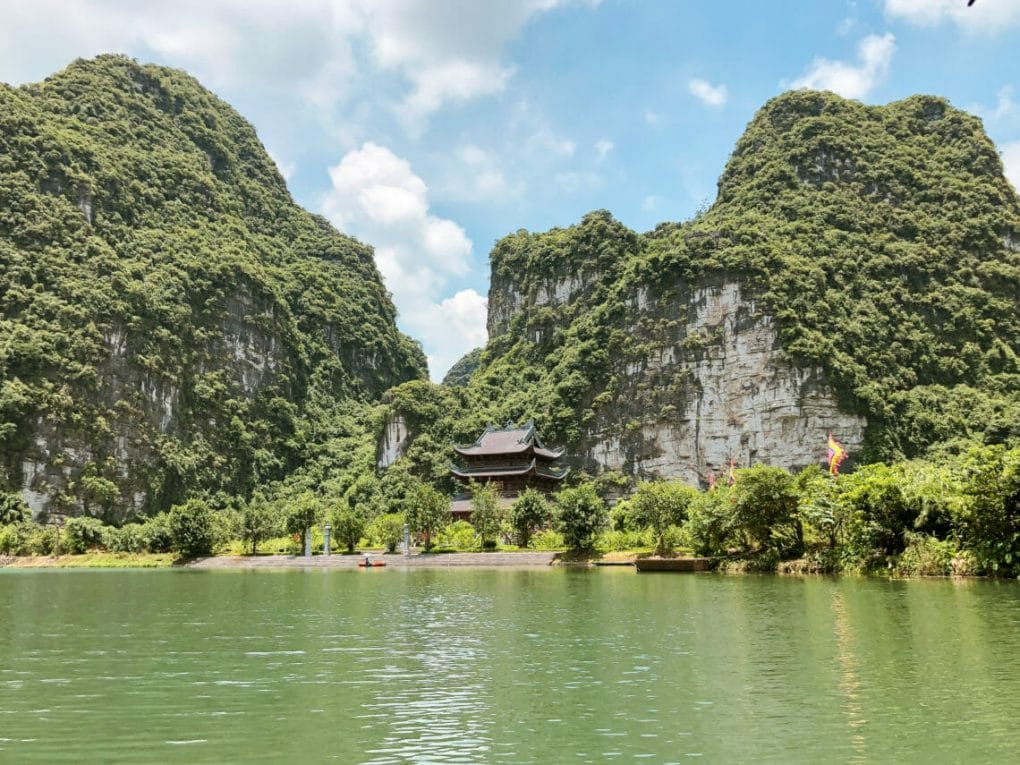
11. The art of the siesta is a thing in Vietnam
If you’ve ever traveled to Spain, you’re probably already well acquainted with the culture of siestas. In Vietnam, it’s the same idea. Most establishments close down around noon until around 1 or 2 pm for nap time.
This goes for many of the tourist attractions as well. For example, we went to the Ho Chi Minh Mausoleum only to find it was closed for nap time. Prepare your itinerary and be sure to check ahead of time to make sure where you’re going is open during these mid-day hours.
12. Hostels/hotels may hold onto your passport until check out
Many hotels and hostels in Vietnam will require you to hand over your passport when you check-in, and many will want to hold on to it until you check out. They use your passport as collateral so you don’t run off before paying. If you’re not comfortable with this, you often just need to ask if you can pay at check-in rather than check-out. They should give you your passport back after payment.
13. Before you book your trip, look into Vietnam’s seasons
Vietnam has two main seasons you need to worry about; summer (rainy), and winter. The summer / rainy season usually starts in May and goes into October while winter / dry season runs April to November.
The winter months are the high tourist season because it’s when Vietnam experiences cool temperatures and little rainfall. You can expect a lot more crowds during this time.
I personally traveled Vietnam right in the middle of rainy season and it really wasn’t too bad. It was hot and definitely rainy, but the rain often lasted only a couple of hours at a time before breaking up into blue skies and sunshine. It was worth the heat and rain to beat the crowds and enjoy cheaper prices.
If you come during the summer months, come prepared with a rain jacket and/or umbrella.
14. If you have room, pack lots of bug spray and sunscreen
Vietnam is a buggy and hot place. You’ll need lots and lots of bug spray and sunscreen! The CDC says on their website that malaria isn’t a concern in most major tourist destinations in Vietnam, but there have been reports of dengue fever. You’ll want some good bug repellent while you’re here.
15. Public toilets in Vietnam often don’t have toilet paper or soap
This is a common thing in Asia, but for those visiting for the first time, I always like to mention what you may encounter in the bathroom. You’ll probably find zero toilet paper, no soap, and a squatter. You may also have to pay for public restrooms, usually about 2,000 to 5,000 dong / $0.09 – $0.20 USD per use.
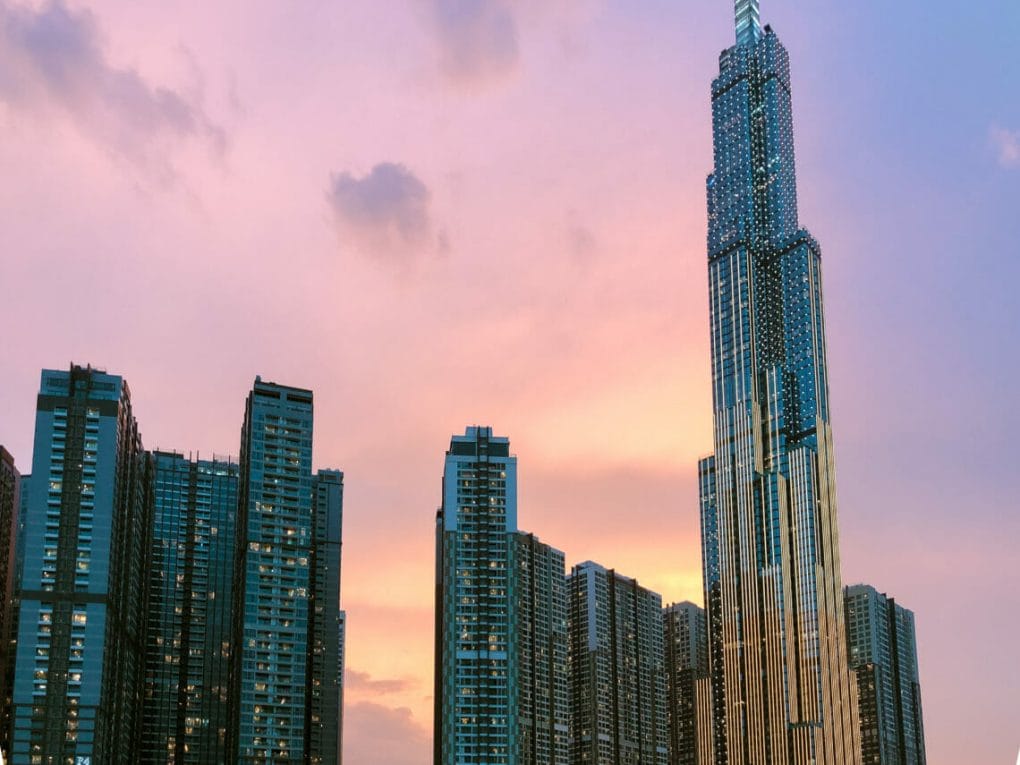
16. Hidden gems are everywhere: Look up and down alleyways for establishments
Part of the charm of Vietnam is the twisty turny architecture. A lot of the coolest spots are tucked away down a side street. This can make finding the entrances to places a little challenging as they’re not always directly on the street. Look up, down, and around for small signs of what you’re looking for.
I stayed in a hostel here once where the entrance was through a Family Mart convenience store and it took me ten minutes longer than it should’ve to realize this. All part of the adventure!
17. Break big bills at the convenience store
As with most of SE Asia, local vendors will prefer to take your small bills and may have a hard time breaking your bigger 200,000 or 500,000 dong notes. If you’re in need of some smaller change, head to a convenience store and break it there. They’re usually good for it.
18. Most outlets in Vietnam accept the standard Europe and American plugs and are 220 volts.
This is so clever, but the outlets in Vietnam support both the flat two prongs of the American plug and the two round pins from Europe. Most of the time they did not have the third hole and most of the time the sockets didn’t support the British plug style.
19. Vegetarians traveling in Vietnam rejoice!
Many traditional Vietnamese dishes feature meat, but because of the largely Buddhist population, it’s very easy here to get dishes made without meat. When you order, just be sure to throw the word “chay” out there and they should know what you mean.
20. Vietnam is the place to haggle, haggle, haggle.
It’s no secret that in the local markets, vendors will take advantage of tourists and overcharge. If you’re interested in buying something, use your haggling skills and start the bidding at half of what they originally quoted you.
You should pay somewhere in between half and the original price. They’ll probably act shocked and appalled but this is actually a local tip from a Vietnamese friend.
If they’re unwilling to get to what you feel is a reasonable price, my favorite haggling tactic is to just walk away – if they are desperate or they know they were significantly overcharging, they will run after you with either your requested price or as far low as they will go. that doesn’t work, the shops all sell the same things so wander around to gauge the best price, and return later if you can’t find it cheaper.
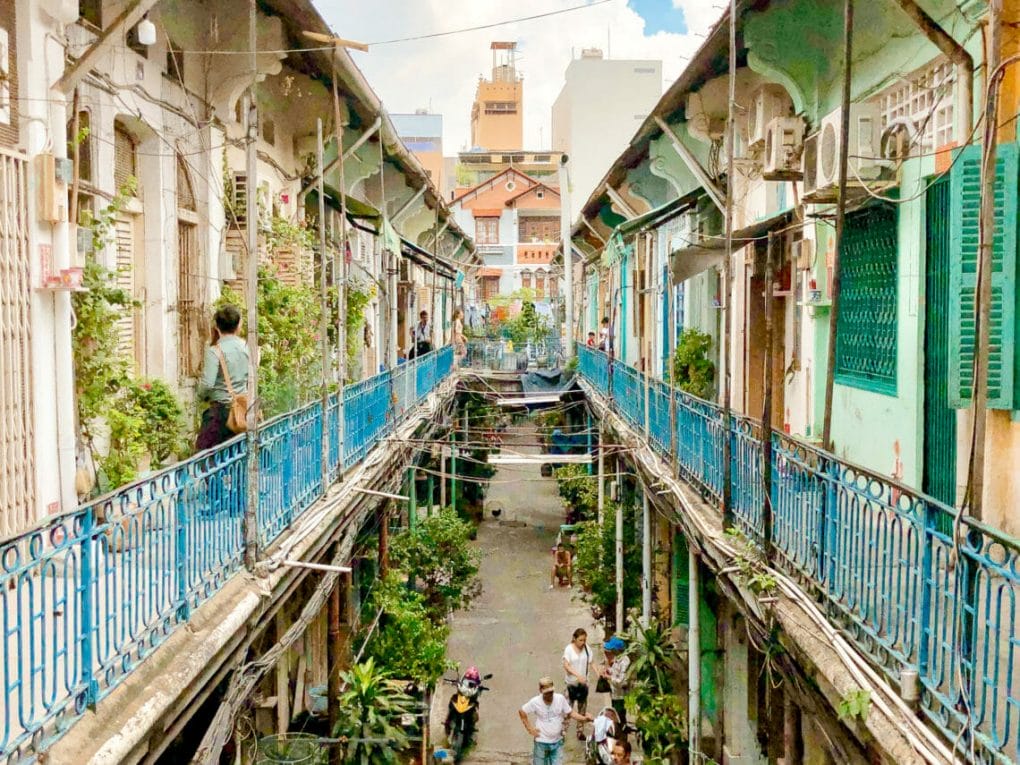
21. Sleeper buses are a cheap way to get around Vietnam
Sleeper buses are a good budget-friendly way to travel between destinations in Vietnam. The country is so large that the main tourist destinations are far apart from one another. Having the ability to lay down on the bus is a comfortable way to travel. Also traveling by night saves the need to spend money on a night’s accommodation! A few things to know about sleeper bus travel;
- There are no shoes on the bus (they’ll give you a plastic bag)
- They stop usually once or twice at rest stops and when the bus honks its horn it’s time to go. There are many other buses there honking as well so an keep an eye out for your bus
- There’s usually no English explanation
- They usually put foreigners on the top bunks to better serve the local Vietnamese customers
- Some destinations will allow you to sleep on the bus until 6am if you arrive early
- If you book through your hostel or accommodation, make sure you get a receipt because the bus company will want to see it
22. As a foreigner you may get skipped in line
There aren’t really rules against skipping, especially when a local Vietnamese person skips a foreigner. Local people are happy to help local people before foreigners, even if you were there first. I’ve encountered this at the bank, ATMs, food stall lines, buses, pretty much in every scenario. It can be frustrating and feels insanely rude (it is, it’s just straight up rude), but it’s the way things are here.
23. Try to go reusable + reduce plastic
Vietnam is notorious for its over use of plastic and single-use items. I think because of their massive street food and motorbike culture, plastics have just become the norm. Everything comes in a plastic cup/container, and is then placed in a plastic bag, and sometimes another sort of plastic holder as well. It’s just so much plastic.
Help reduce plastic waste and come prepared with a reusable coffee mug, water bottle, tote bag, a metal straw and maybe even a water filter if you’re passionate about it. Street vendors are happy to use your reusable items if you have them.

24. If you’re going to buy clothes in Vietnam, buy them in Hoi An.
Hoi An is well known for their fantastic tailor work. If you’ve arrived in Vietnam and are looking for some quality affordable clothing, a good Vietnam travel tip to know is – don’t buy anywhere but Hoi An or the surrounding areas. The quality of clothes in Ho Chi Minh and Hanoi is significantly poorer at souvenir shops than in Hoi An, unless you go straight to a custom tailor.
2.) Vietnam is a coffee lover’s paradise.
Coffee is an integral part to Vietnamese culture, so naturally as a coffee addict myself this was one of the most important Vietnam tips I came across. The local Vietnamese style coffee will be your cheapest option, and they have a few ways of serving it. The Hungry Suitcase has a great guide on how to order coffee in Vietnam, so if you’re as addicted to coffee as I am, you should give it a read!
As a quick summary;
Café den= black coffee, usually with sugar unless requested without
Café sua= coffee with condensed milk
*The standard of coffee comes iced, so if you want it hot be sure to specify!
This post may contain affiliate links, meaning at no additional cost to you, if you click my links and make a purchase, I may earn a small commission. Learn more on my disclosure page. Thank you for your support!
There you have it! My best travel tips for Vietnam so you have a smooth trip. Do you have any other Vietnam recommendations to share? Comment below!


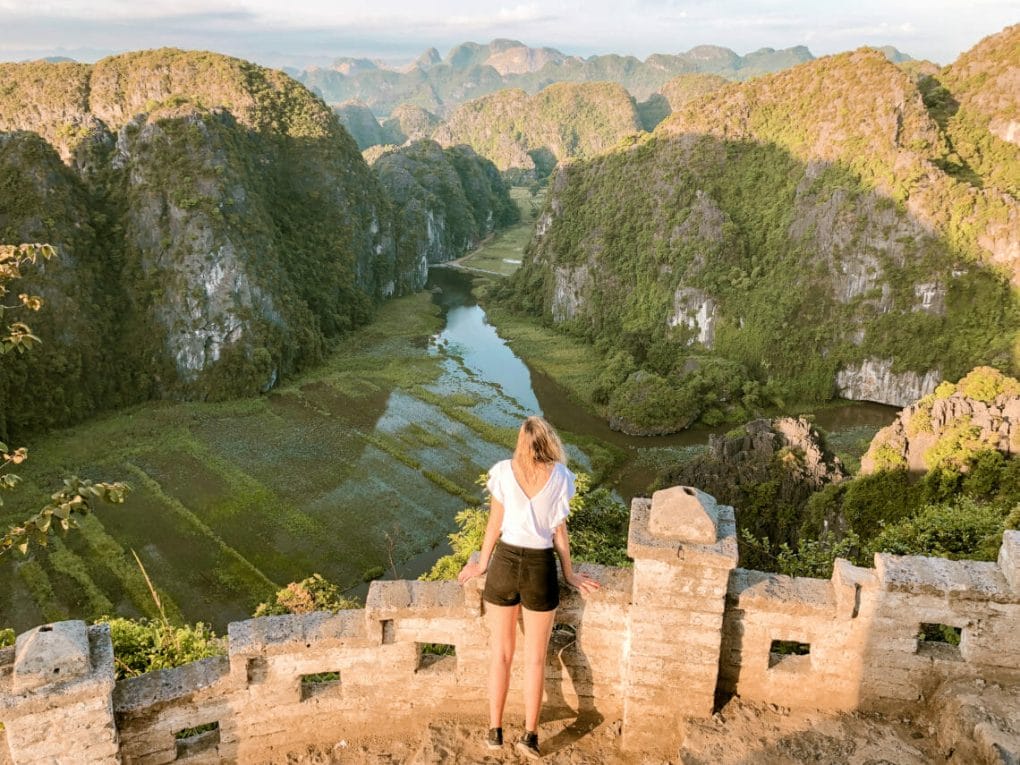
Thank you a lot!
My pleasure! Thank you for reading 😁
Love Vietnam so much and all your tips reminded me of my travels there. Definitely some I didn’t know though. Saved for future reference
Vietnam is such a dream isn’t it?! So glad you found it helpful!!❤️❤️
beautiful article, thanks for sharing !
Hi Brit,
I just wanted to say thank you. We’re just about to embark on a 3 week family holiday (2 x adults & 2 girls 11 & 8) to Vietnam & I can safely say that this website has been the “go to” for information and preparation. I’ve no doubt your content has positively contributed to the quality of our holiday so again, thank you so much. Best wishes for all your future adventures. And if you come to New Zealand we’d be happy to host you 🙂
Thank you so much for your kind words! I hope you and the family have an amazing time and safe travels. And actually, I’ll be headed to New Zealand this July! 🙂
Thankyou so much for such a wonderfully written article. Super helpful 🙂 I am visiting Hanoi during Christmas time this year and I am confident your tips and tricks are gonna come handy!! Thankyou once again Brit. Stay blessed and travelling always!
Thank you so much for your kind words!! Have a safe and amazing trip!